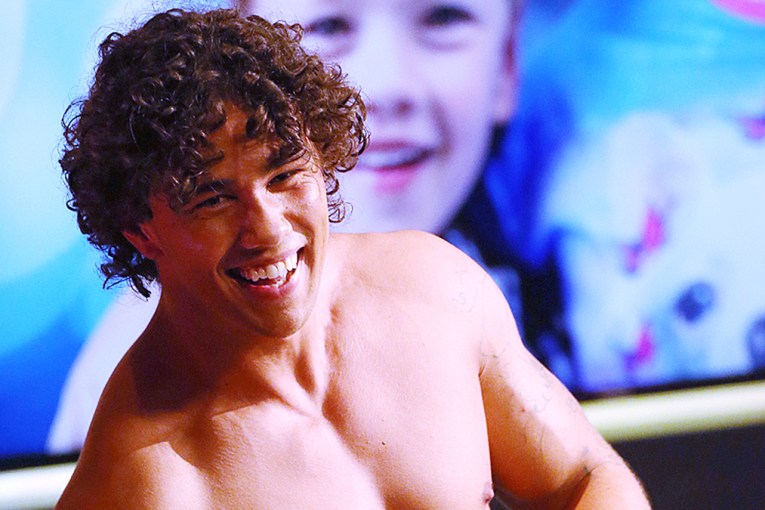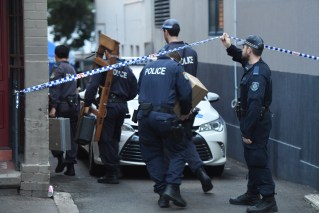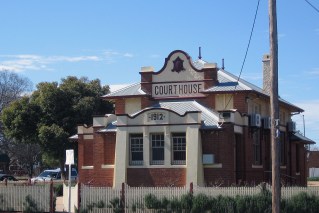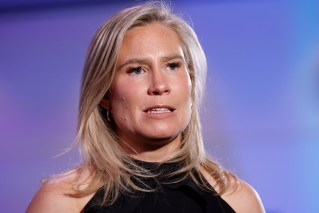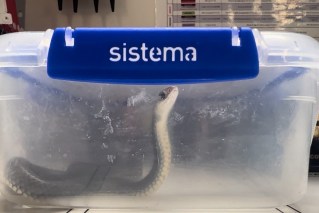Worried doctors demand more detail on NSW’s plan to exit lockdown

Doctors are calling for more detail on how NSW plans to reopen at 70 per cent double dose at a time when the state would still be recording some 500 cases a day.
While businesses and the tourism sector have welcomed the state’s lockdown exit plan, the Australian Medical Association warned the health system would be under incredible stress.
President Dr Omar Khorshid called for the release of any modelling of future case numbers and health system impacts, saying the roadmap “appears to leave NSW at considerable risk of having to return to lockdowns”.
The AMA says it wants the modelling so it can assess the impacts on hospitals and would prefer a slow and steady reopening rather than removing too many restrictions at once.
Meanwhile pressure is mounting for Victorian health authorities to outline freedom measures for when the state hits its 70 per cent double dose milestone as its sixth lockdown drags out.
But Premier Daniel Andrews said experts were still nutting out a plan.
“I’ve got some draft modelling [but] it’s still got a bit more to go. I know it’s very frustrating, you’d love to be able to turn this around in 24 hours, but they need more data as well,” said Mr Andrews.
The ACT will unveil its plan to gradually reopen Canberra on Tuesday as Chief Minister Andrew Barr labelled the next eight weeks a vaccination race.
It comes as regional Victoria has been released from lockdown on Friday — except Shepparton — while parts of the NSW mid-north coast and north coast will emerge from lockdown on Saturday — so too will the Riverina and Murrumbidgee areas, including Wagga Wagga and Albury.
- Related story: The rule changes coming to NSW at 70 per cent vaccination
- Related story: How vaccine passports will work in each state and overseas
Prime Minister Scott Morrison warned hospitals would come under pressure when Australia reopened but insisted that shouldn’t stop states from easing restrictions.
He said the next stage of the pandemic would be hard, with cases set to rise as restrictions eased under the national reopening plan.
“That comes with additional pressure on the hospital system. That’s understood. That is inevitable,” said Mr Morrison.
“If you want to live with the virus, you inevitably have to pass down that tunnel, and that will be true in every single state and territory in the country.”

Businesses in Victoria are waiting for the state’s roadmap out of lockdown. Photo: AAP
Business Council of Australia research shows 71 per cent of Australians support reopening state borders when vaccine coverage reaches 70 per cent.
The survey of 1200 people found 77 per cent want hard internal borders scrapped at an 80 per cent immunisation rate.
BCA chief executive Jennifer Westacott said rapid antigen testing and state governments planning surge capacity in hospitals would be crucial to reopening.
Ms Westacott said 70 per cent vaccinations should lead to restrictions being eased in lockdown states including schools reopening and construction returning.
At 80 per cent, she wants hospitality, retail and manufacturing back to 100 per cent capacity with mask rules retained in high-risk environments.
“The longer we take to act, the bigger the risk to Australia’s reputation as a good place to do business and create jobs,” Ms Westacott said.
Australia has fully vaccinated 40.4 per cent of its over-16 population, while 65.4 per cent have received a single dose.
The other side effects of lockdown
While lockdowns have saved Australian lives, new research shows millions of us fed unhealthy habits and turned to vices to cope with the loss of freedoms.
The Australian Institute of Health and Welfare on Friday released a report exploring the direct and indirect effects of the first year of the pandemic on Australians’ health.
While the country fared comparatively well with the virus, the wellbeing of many Australians had suffered thanks to vices like junk food, alcohol, cigarettes and slacking off on exercise.
During the country’s initial lockdown between April and June in 2020, one in five people who drink alcohol noticed they were reaching for the bottle more, while a similar proportion of smokers and illicit drug users also upped their consumption.
While some saw the time as an opportunity to exercise more, a similar share of Australians decreased their physical activity.
One in four people had increased how often they indulged in snack foods, and more than half (58 per cent) reported they’d been spending more time on their screens.

Australians turned to drink and screens during lockdowns. Photo: Getty
But it wasn’t all bad news.
Some 41 per cent of people reported they had increased their household chores and projects, although their inspiration was short lived. Two months later it had almost halved, to 25 per cent.
Emergency department presentations were lower, and the road toll during March and April was down on the five-year average by five per cent and 25 per cent respectively.
There was, however, a big increase in the number of ED presentations for do-it-yourself injuries, likely from many of those undertaking home projects.
Hordes of Australians put off seeking healthcare, with some services seeing considerable reductions.
There were 145,000 fewer mammograms through BreastScreen Australian between January and June 2020 compared to the same period in 2019, and only a boost of 12,000 when restrictions ended.
Similarly, the decline in optometry appointments at the height of the initial restrictions was so sharp the number of services for the entirety of 2020 was eight per cent lower than in 2019.
The key aim of lockdowns – to prevent hospitals becoming overwhelmed with COVID cases – was achieved.
“If Australia had experienced the same crude case and death rates as Canada, Sweden or the United Kingdom, by early April 2021 there would have been between 680,000 and 2 million cases instead of the 29,000 that did occur, and between 16,000 and 48,000 deaths, between 15 and 46 times the number of deaths,” Dr Moon said.
Child vaccines

Photo: Getty
Most parents are keen for their children to get a COVID-19 jab, but language and education are major barriers to people rolling up their sleeves.
An Australian National University survey of more than 3000 adults shows 42.5 per cent of parents and carers would definitely get their children vaccinated when a safe and effective option was available.
Another 36.3 per cent of parents indicated they would likely get their children jabbed.
The remaining 21.2 per cent indicated they were either totally against getting their children vaccinated or unlikely to do so.
Children as young as 12 are currently eligible to book in for a Pfizer jab, with Moderna expected to be given the final tick for that age group imminently.
“People have been worried about long COVID among children who get the virus or the role of children in spreading the virus among households and in the community,” ANU’s professor Nicholas Biddle said.
The study found key groups unwilling to vaccinate their children included Indigenous Australians, those who did not speak English, had a low education level or lived in disadvantaged areas.
-with AAP
